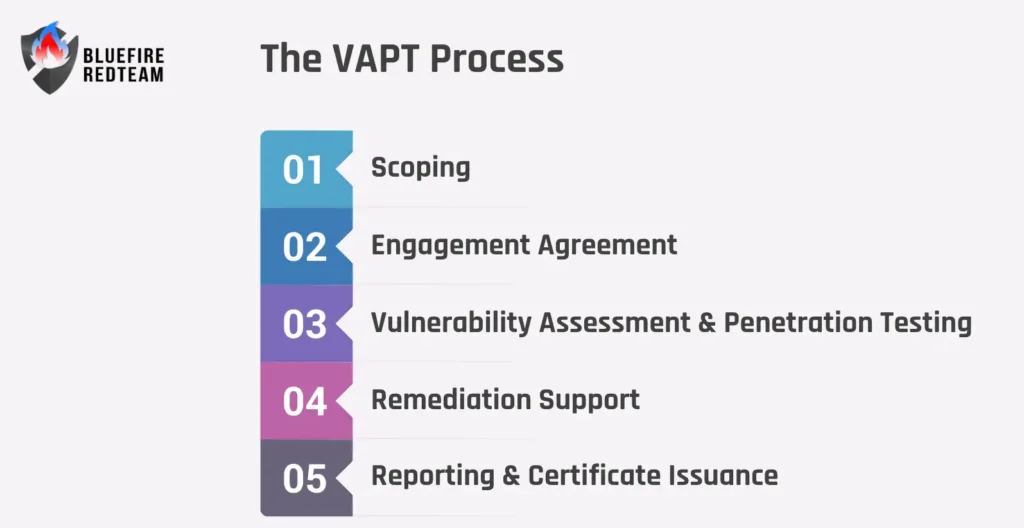Have you recently been asked for a VAPT certificate by partners or clients to demonstrate the security of your systems?
If so, you’re not alone.
Many businesses mistakenly believe that CEH certifications, which are individual credentials, are the same as VAPT certificates, which are a formal record of security testing. This miscommunication can cause needless compliance issues and stall transactions.
In this guide, we’ll clear up the confusion and walk you step by step through:
- What a VAPT certificate really is
- Why your business may need one
- How the process works
- What to look for in a provider
By the end, you’ll know exactly how to get a VAPT certificate quickly—so you can prove due diligence and keep your clients confident.
See a sample VAPT certificate.
What Is a VAPT Certificate?
A Vulnerability Assessment and Penetration Testing (VAPT) certificate is an official attestation that your organization’s systems have undergone structured security testing.
In simple terms, it’s documented proof that:
- Your applications and infrastructure were tested for vulnerabilities
- Risks were analyzed and prioritized
- Recommendations were provided
- Your environment is demonstrably more secure
What Does It Include?
A proper VAPT engagement typically results in:
- A detailed technical report (listing all vulnerabilities, severity ratings, evidence)
- An executive summary (for stakeholders and clients)
- A certificate of assessment, issued by the security provider
This certificate shows you’ve taken proactive steps to protect customer data, comply with regulations, and build trust.
VAPT Certificate vs CEH Certification: Know the Difference
The distinction between a Certified Ethical Hacker (CEH) certification and a VAPT certificate is one of the main causes of misunderstanding.
Below is a quick comparison:
| Aspect | VAPT Certificate | CEH Certification |
|---|---|---|
| Issued To | Your company | An individual professional |
| Purpose | Prove systems were tested for vulnerabilities | Show personal skills in ethical hacking |
| Issued By | A security service provider (e.g., Bluefire Redteam) | EC-Council |
| Validity | Typically valid 6–12 months (or as per compliance) | 3 years (renewable) |
Key takeaway:
If your client is asking for a VAPT certificate, they expect a documented security assessment, not your employees’ personal CEH credentials.
Who Needs a VAPT Certificate?
You might be wondering whether your business is required to get a VAPT certificate.
In most cases, you don’t need it by law—but if you’re in any of these situations, it’s highly recommended:
SaaS companies
- Selling to mid-market and enterprise clients
- Pursuing ISO 27001, SOC 2, or PCI DSS compliance
E-commerce platforms
- Handling payment data and customer PII
Fintech and healthcare
- Operating in regulated sectors
Startups
- Building credibility to win large contracts
Business Expansion
- If you are willing to onboard internal customers from Europe, etc, they need a VAPT certificate for security assurance
A VAPT certificate shows a strong commitment to security, even if no specific regulation requires it. This makes it easier to secure deals, lower liability, and safeguard your brand.
The VAPT Process: How It Works

When you work with Bluefire Redteam (or another reliable provider) for VAPT certification, you can anticipate the following:
Step 1: Scoping
We define what needs testing:
- Web apps
- APIs
- Internal networks
- Cloud environments
You’ll approve the scope and confirm timelines.
Step 2: Engagement Agreement
We formalize the project:
- NDA and legal agreements
- Rules of engagement
- Communication protocols
Step 3: Vulnerability Assessment & Penetration Testing
Our team combines automated scanning with manual testing:
- Identify and validate vulnerabilities
- Assess exploitability and impact
- Document findings with evidence
Step 4: Remediation Support
You’ll get clear recommendations to fix identified issues.
- Remediation guidance
- Optional retesting (included in many engagements)
Step 5: Reporting & Certificate Issuance
Finally, you receive:
- Technical report
- Executive summary
- Official VAPT Certificate—ready to share with clients and auditors
How to Choose the Right VAPT Provider
Not all VAPT services are created equal. Here’s what to look for:
Recognized Expertise
- Certifications like OSCP, CISSP, CREST
- Proven track record in your sector
Clear Deliverables
- Certificate of assessment included
- Actionable remediation guidance
Timely Turnaround
- Define timelines upfront
- Avoid delays that hold up contracts
Post-Engagement Support
- Retesting included?
- Ongoing advisory help?
So that you can concentrate on expanding your company, Bluefire Redteam specialises in quick, comprehensive VAPT engagements with transparent certification and compliance mapping.
Get Your VAPT Certificate the Easy Way
You don’t need to guess, waste time comparing vendors, or risk missing compliance deadlines.
Step 1: Book a free consultation
Step 2: Get a clear scope and timeline
Step 3: Receive your VAPT certificate in as little as 7 days
Schedule Your Free VAPT Scoping Call →
Protect your business. Win more deals. Show your clients you take security seriously.
Frequently Asked Questions - VAPT Certificate
- Is a VAPT certificate mandatory for compliance?No, but it’s often expected by clients and auditors as part of demonstrating due diligence.
- How long does it take to get a VAPT certificate?
Depending on scope, typically 7–14 business days from kickoff to certificate issuance.
- What does a VAPT engagement & certificate cost?Pricing varies by scope and complexity. Most small-to-mid-size businesses invest between $2,000–$6,000.
- Is CEH enough to satisfy my clients?No—CEH only certifies an individual’s skills. Clients expect an organizational assessment report and certificate.
- How often should we get a VAPT?At least annually, or after major system changes.
